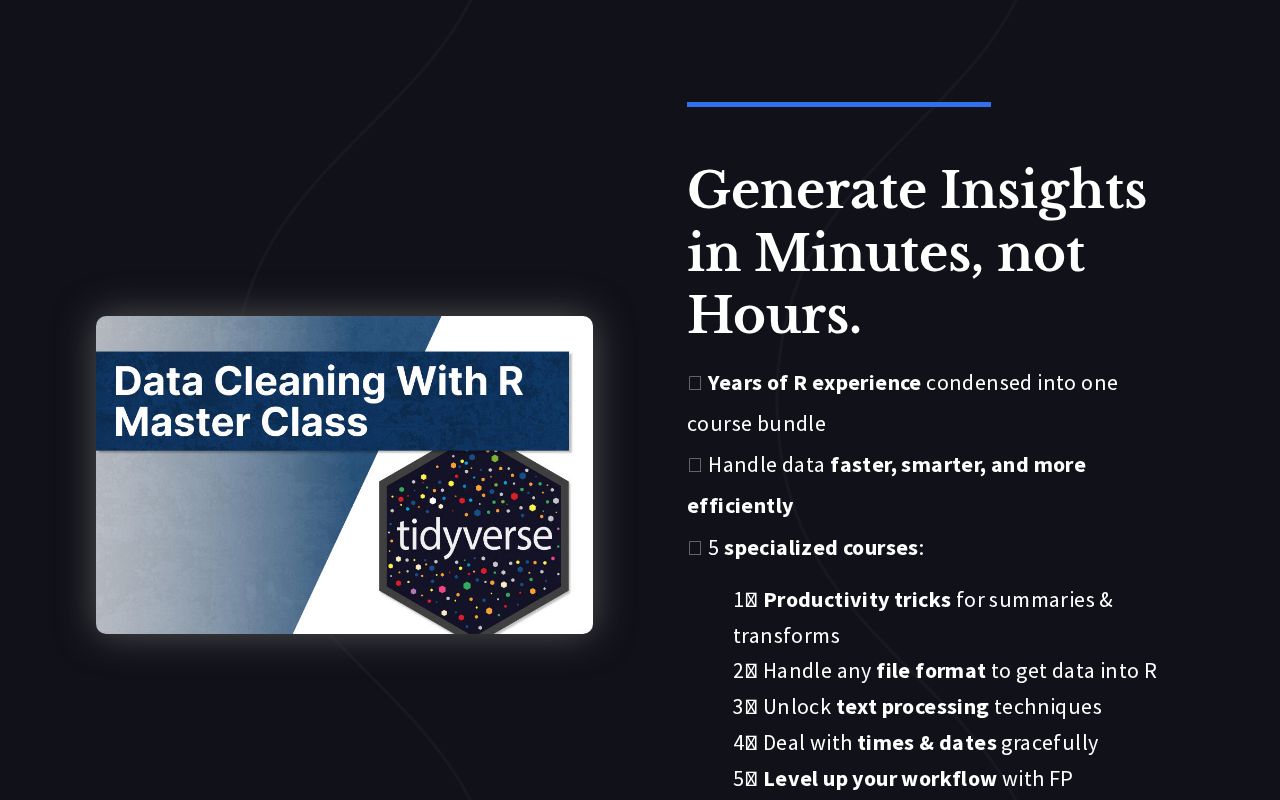- 3 Minutes Wednesdays
- Posts
- 3MW (Look at all those Quarto Outputs)
3MW (Look at all those Quarto Outputs)
Guten Tag!
Many greetings from Munich, Germany. I’m continually surprised by the myriad of things that Quarto can generate for you. Books, Websites, PDFs, Dashboards, there are like a thousand options.
So today, I’ve decided to give you an overview over the fantastic options that Quarto gives you (along with some of my favorite resources.) But before we do that, let’s have a look at our regular announcements.
Data cleaning progress
Like every week, I’ve inserted new lessons into my data cleaning course. This week, I’ve included lessons on many awesome features of regular expressions. These are a great tool for extracting valuable bits and pieces from text data.
If you’re curious, here’s a preview of regular expressions we build step by step in the course. In this particular example we learn how to use regular expressions to extract names from e-mail addresses.

If you want to find out more about the course, you can find all of the infos at
And now let's talk about Quarto's output formats.
Reveal.js Presentations
If you want to create presentations with Quarto, I'd suggest using the Reveal.js output format. This allows you to create HTML-based slides, which means you can easily upload them anywhere that hosts static files, like Netlify or GitHub Pages.
And the great thing about this format is that it supports animations, transitions, and interactive features, making it a powerful tool for engaging presentations. And if you want to learn how to use Quarto to create particularly nice Quarto presentations, check out Emil Hvitfeld’s Slicecraft series where Emil teaches you how to create slides like this:

Emil teaches you how to create beautiful slides like this
Powerpoint Slide Decks
A short note on PowerPoint slide decks: If you want to create them, I'd suggest using the {officer} package instead of Quarto, as it provides more flexibility for creating and customizing PowerPoint presentations. But there is a small section in the Quarto docs about Powerpoint which isn’t very detailed. So use at your own peril.
Blogs
Next, let's discuss blogs. Blogs are a fantastic use case for Quarto; it's one of the best tools to create a data-driven or programming-driven blog. And Quarto is exacly what I used for my own blog.
Quarto makes it easy to build full-fledged websites that showcase blog posts on specific coding topics. This is especially useful if you're working with data-related programming languages like R, Julia, or Python as these languages have a native support in Quarto.
And creating a blog with Quarto isn’t that hard either. In fact, you can create one in minutes if you follow this guide:
And if you’re looking for a more detailed guide that goes deep into customizations, I got you covered here:
Books
Now, let's cover books. The idea of writing a whole book might seem daunting, but with Quarto books, you can simply create a set of documents that are linked together through one website. And that’s how you create a book.
I've written a few books myself: one for my R beginner course when I was still teaching at university and another for my {gt} book. It's a fantastic format for writing in-depth about a particular topic.

Customized PDFs
If you need to create PDFs or embed your data into PDFs, Quarto has some great options. You can render any Quarto file to PDF, and the cool thing is that if you include tables (such as those created with {gt} in R or pandas in Python), they’ll be formatted exactly as they appear in the HTML versions.

Taken straight from the Quarto docs
Quarto uses the Typst framework under the hood, so your data tables will look the same even though packages like {gt} provide tables in an HTML format and not in a PDF kind of way.
Speaking of Typst, it also allows you to add custom styling to your documents. And even though that stuff is new, there’s a nice demo of this by David Keyes from this year’s posit::conf().
(Technically this talk is about design patterns but David also explains how Typst helps with that.)
Dashboards
Finally, let's talk about something I'm particularly excited about: dashboards. With Quarto dashboards, it’s really easy to quickly create beautiful, static dashboards.

From the Quarto dashboard gallery
Also, if you want to add Shiny components, you can do so via Shiny code chunks. Of course, you'll need to figure out the hosting, but it's nice to have the ability to create attractive, static dashboards rapidly and then integrate Shiny components as needed.
And in case you haven’t seen it yet, I’ve put together a long detailed video on how to get started with Quarto Dashboards.
Recently, the makers behind Quarto themselves created a new series on dashboards:
As always, if you have any questions, or just want to reach out, feel free to contact me by replying to this mail or finding me on Linkedin.
See you next week,
Albert 👋
Enjoyed this newsletter? Here are other ways I can help you:




.png)

Reply